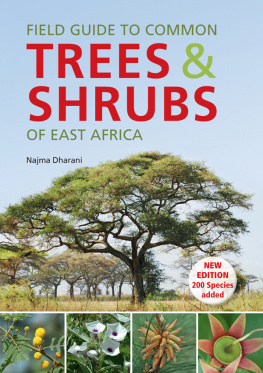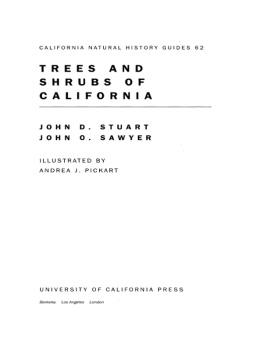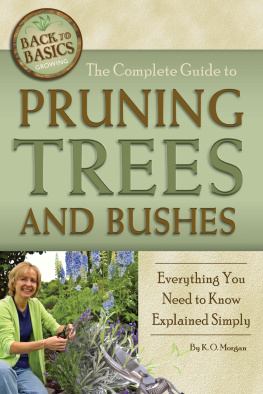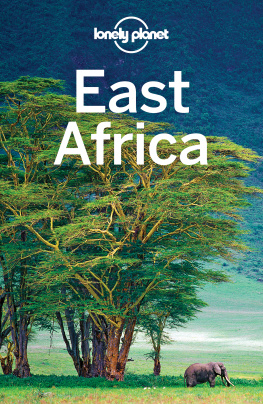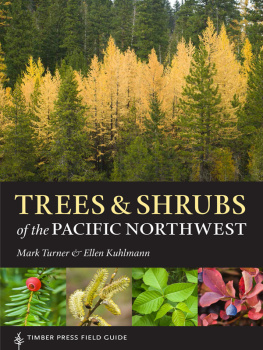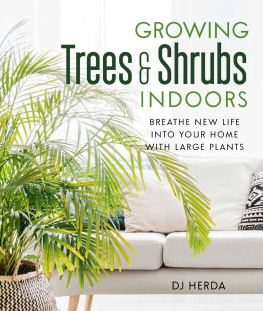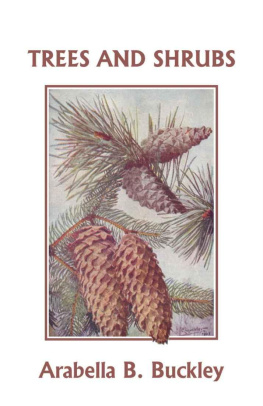Najma Dharani - Field Guide to Common Trees & Shrubs of East Africa
Here you can read online Najma Dharani - Field Guide to Common Trees & Shrubs of East Africa full text of the book (entire story) in english for free. Download pdf and epub, get meaning, cover and reviews about this ebook. year: 2019, genre: Detective and thriller. Description of the work, (preface) as well as reviews are available. Best literature library LitArk.com created for fans of good reading and offers a wide selection of genres:
Romance novel
Science fiction
Adventure
Detective
Science
History
Home and family
Prose
Art
Politics
Computer
Non-fiction
Religion
Business
Children
Humor
Choose a favorite category and find really read worthwhile books. Enjoy immersion in the world of imagination, feel the emotions of the characters or learn something new for yourself, make an fascinating discovery.
- Book:Field Guide to Common Trees & Shrubs of East Africa
- Author:
- Genre:
- Year:2019
- Rating:5 / 5
- Favourites:Add to favourites
- Your mark:
- 100
- 1
- 2
- 3
- 4
- 5
Field Guide to Common Trees & Shrubs of East Africa: summary, description and annotation
We offer to read an annotation, description, summary or preface (depends on what the author of the book "Field Guide to Common Trees & Shrubs of East Africa" wrote himself). If you haven't found the necessary information about the book — write in the comments, we will try to find it.
Field Guide to Common Trees & Shrubs of East Africa — read online for free the complete book (whole text) full work
Below is the text of the book, divided by pages. System saving the place of the last page read, allows you to conveniently read the book "Field Guide to Common Trees & Shrubs of East Africa" online for free, without having to search again every time where you left off. Put a bookmark, and you can go to the page where you finished reading at any time.
Font size:
Interval:
Bookmark:
 This book is dedicated to my mother-in-law. I am truly blessed by your compassion, wisdom and contentment. Thank you for always being there for me whenever I have needed you. Published by Struik Nature (an imprint of Penguin Random House South Africa (Pty) Ltd) Company Reg. No. 4, Oxbow Crescent, Century Avenue, Century City 7441 PO Box 1144, Cape Town 8000, South Africa Visit www.penguinrandomhouse.co.za and join the Struik Nature Club for updates, news, events and special offers. 4, Oxbow Crescent, Century Avenue, Century City 7441 PO Box 1144, Cape Town 8000, South Africa Visit www.penguinrandomhouse.co.za and join the Struik Nature Club for updates, news, events and special offers.
This book is dedicated to my mother-in-law. I am truly blessed by your compassion, wisdom and contentment. Thank you for always being there for me whenever I have needed you. Published by Struik Nature (an imprint of Penguin Random House South Africa (Pty) Ltd) Company Reg. No. 4, Oxbow Crescent, Century Avenue, Century City 7441 PO Box 1144, Cape Town 8000, South Africa Visit www.penguinrandomhouse.co.za and join the Struik Nature Club for updates, news, events and special offers. 4, Oxbow Crescent, Century Avenue, Century City 7441 PO Box 1144, Cape Town 8000, South Africa Visit www.penguinrandomhouse.co.za and join the Struik Nature Club for updates, news, events and special offers.
First published 2002 Second edition 2011 Third edition 2019 Copyright in text and illustrations 2002, 2011, 2019: Najma Dharani Copyright in photographs 2002, 2011, 2019: Najma Dharani Copyright in maps 2011, 2019: Najma Dharani Copyright in published edition 2002, 2011, 2019: Penguin Random House South Africa (Pty) Ltd Publisher: Pippa Parker Managing editor: Helen de Villiers Editor: Colette Alves Designer: Dominic Robson Proofreader: Emsie du Plessis Penguin Random House is committed to a sustainable future for our business, our readers and our planet. This book is made from Forest Stewardship Council certified paper. All rights reserved. No part of this publication may be reproduced, stored in a retrieval system, or transmitted, in any form or by any means, electronic, mechanical, photocopying, recording or otherwise, without the written permission of the copyright owner(s). ISBN 978 1 77584 608 6 (PRINT) ISBN 978 1 77584 609 3 (ePUB) Cover images
Front: (top) Faidherbia albida ; (bottom left to right) Acacia nilotica , Astripomoea hyoscyamoides , Pinus patula , Sonneratia alba B ack: (top left to right): Delonix regia, Diplolophium africanum, Grewia similis, Senna longiracemosa; (bottom left to right): Quiabentia chacoensis , Ritchiea albersii , Dichrostachys cinerea Spine: Leucaena leucocephala Neither the author nor the publishers can be held responsible for the consequences arising from incorrect identification or inappropriate use of a plant. Should you want to contact the author, e-mail

This natural wealth is, to a very large extent, the product of the regions enormous diversity of habitat and climate. Broadly speaking, rainfall is both generous and reliable at the higher altitudes, the air is cool and the vegetation lush. By contrast the lowland areas tend to be hot and dry; the climate is both hot and humid along the coast and in the basins near the big lakes. Climatic and ecological variety create ideal environments for a great many different species of plants (and, of course, animals and birds). This Field Guide to Common Trees and Shrubs of East Africa is not a botanical textbook, but a selective guide to the more common trees and shrubs, indigenous, naturalized and exotic, that you will see in the region. It is designed to help the plant enthusiast identify prominent species that can be observed, studied and enjoyed in gardens and parks, along roadsides and in easily accessible parts of the countryside.
In East Africa, indeed throughout sub-Saharan Africa, trees fulfil important social and economic functions. In rural areas, the forests serve as the principal sources of energy, providing fuelwood and charcoal, and they go a long way toward meeting the needs of farmers and herders. They also yield materials for building and for many other domestic purposes. Trees have profound significance in religious belief and ceremony, and their various components are central to traditional medicine. Indeed the forests are precious, fragile and irreplaceable repositories of ingredients basic to the treatment of a surprising number of human ailments. The wider world has only recently (belatedly) begun to appreciate their value, and their potential, in this respect.
Indigenous trees and shrubs are part of East Africas legacy. Not only are they natural resources and things of beauty to be admired, but also symbols of life. Today much of the forested land has been cleared for agriculture, and for the fuel industry. There is an urgent need to cherish what remains, and to try to return at least some of the land to its original, pristine condition.
But to the non-technical but reasonably well-informed layperson (and it is for the layperson that the book has been written and designed) these are fairly definite, visually delineated groupings: a shrub is smaller than a tree; palms belong to an obviously distinctive family; mangroves are confined to a particular habitat and are exclusive in form and habit. The species accounts within each part are arranged in alphabetical order (scientific names from A to Z) and are consistent in style, each specifying the English and the more prominent African (local) common names where these are known, the family to which the plant belongs, and whether it is indigenous to the region or exotic. This is followed by a brief description of the tree or shrub and then a summary of the main characteristics of the plants major components (bark, leaves, flowers, fruit and so on), and ends with a description of its various uses. Each entry is illustrated with one or more photographs. Trees and their parts are labelled vertically alongside each image. Vegetation zones of East Africa  Although the book is intended primarily for the layperson, the use of technical terms is unavoidable.
Although the book is intended primarily for the layperson, the use of technical terms is unavoidable.
Botany is a science that has its own vocabulary, even its own language. The glossaries and diagrams on ).
 Garcinia livingstonei . Fruit is used for treating mumps. Root infusion is used together with milk to treat abdominal pain in pregnant women or shortly after childbirth. Medicinal plants are an important part of the daily lives and the cultural heritage of many East African peoples.
Garcinia livingstonei . Fruit is used for treating mumps. Root infusion is used together with milk to treat abdominal pain in pregnant women or shortly after childbirth. Medicinal plants are an important part of the daily lives and the cultural heritage of many East African peoples. The use of plants in the treatment of various diseases, as a specific antidote against magic, and for religious ceremonies, has been an integral element of African society for centuries. The East African herbalist, often referred to as Bwana Mganga (Medicine Man) is an important and highly respected figure within the society. Knowledge of medicinal plants is normally passed on orally from one generation to the next. Unfortunately, a great deal of valuable information can be lost or distorted if a medicine man dies without revealing such knowledge. In preparing these chapters, it became clear that there is a lack of detailed documentation on the significance and application of curative plants in East Africa. Such documentation is an urgent priority in view of the fragility of oral-tradition knowledge and the rapid pace of urbanization (and the consequent erosion of tribal culture) in this part of Africa.
Next pageFont size:
Interval:
Bookmark:
Similar books «Field Guide to Common Trees & Shrubs of East Africa»
Look at similar books to Field Guide to Common Trees & Shrubs of East Africa. We have selected literature similar in name and meaning in the hope of providing readers with more options to find new, interesting, not yet read works.
Discussion, reviews of the book Field Guide to Common Trees & Shrubs of East Africa and just readers' own opinions. Leave your comments, write what you think about the work, its meaning or the main characters. Specify what exactly you liked and what you didn't like, and why you think so.

